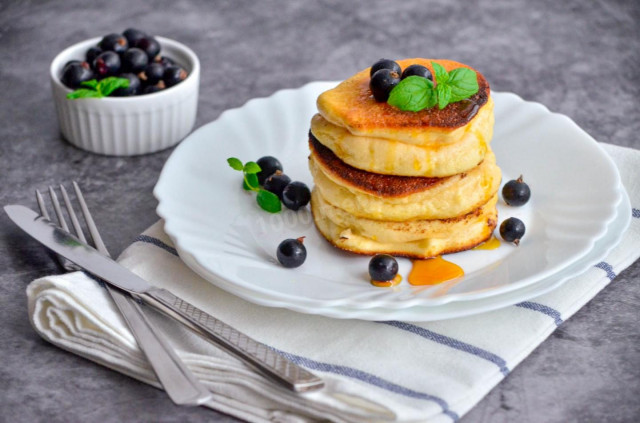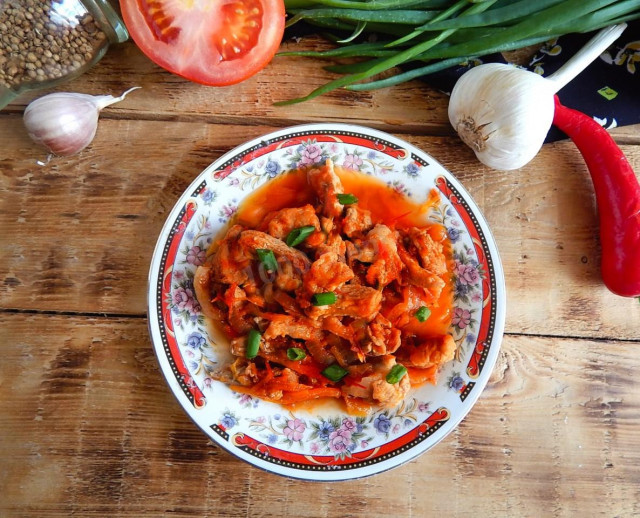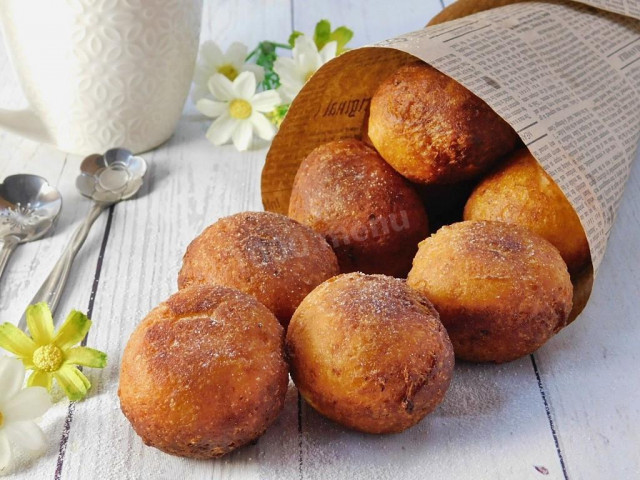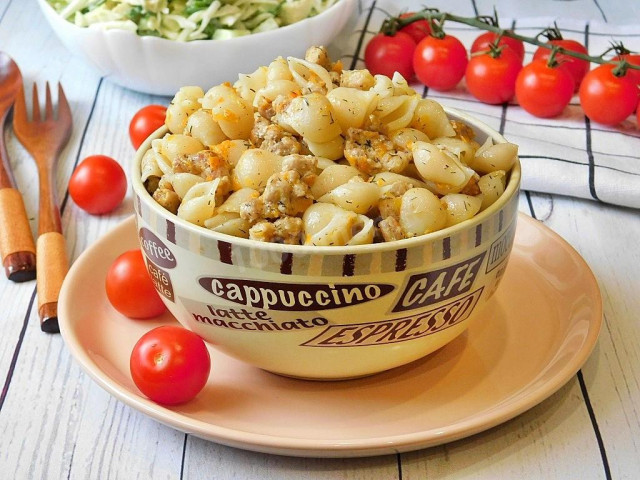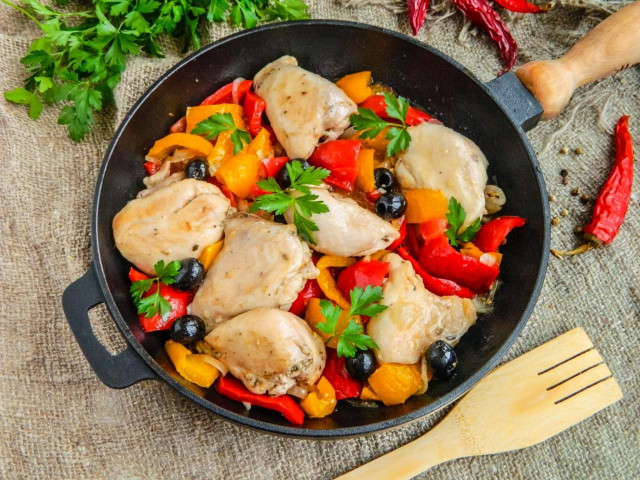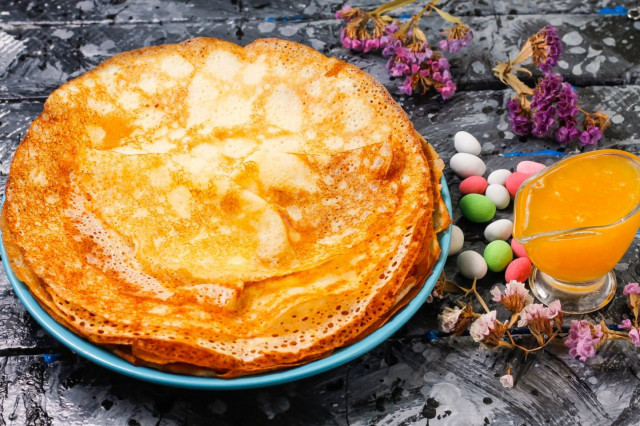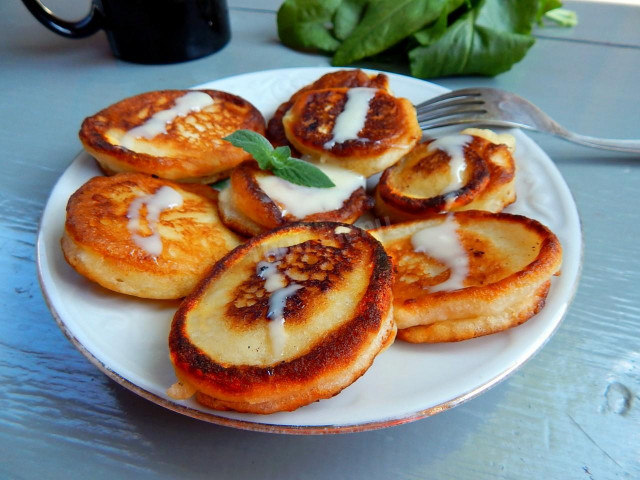Composition / ingredients
Step-by-step cooking
Step 1:
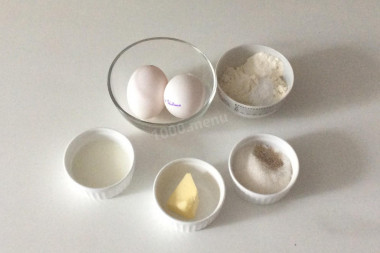
How to make lush and airy Japanese pancakes in a frying pan? Prepare the products.
Step 2:
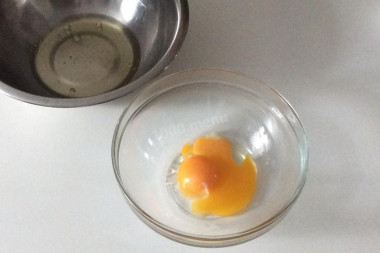
Divide the eggs into whites and yolks. Do this carefully so that the yolk does not get into the protein, otherwise it will not climb.
Step 3:
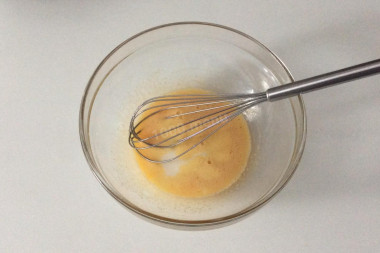
Add one tablespoon of sugar to the yolks, mix well.
Step 4:
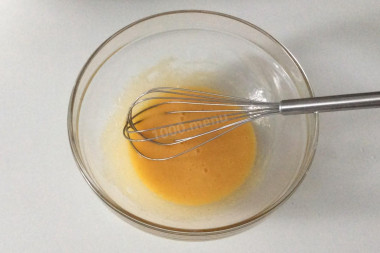
Pour in the milk, stir again until smooth.
Step 5:
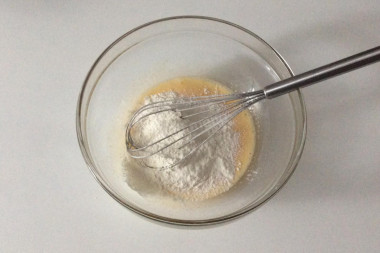
Mix flour with baking powder. Sift the resulting mixture into the egg mass.
Step 6:
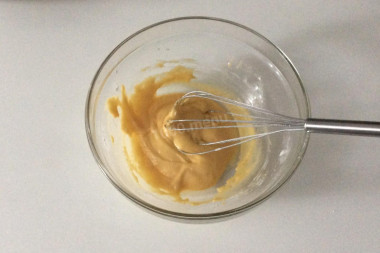
Knead a homogeneous dough. It may seem a little thick to you, don't be afraid, it's necessary.
Step 7:
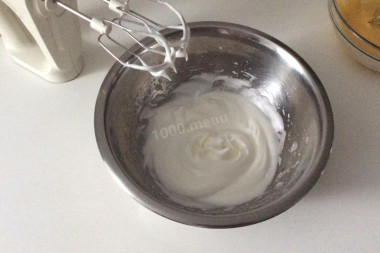
Whisk the whites by adding a pinch of salt — it speeds up the whipping process. First at low speed, then at high speed. When whipping, gradually add the remaining spoonful of sugar. It is necessary to beat up to stable peaks. Another good test for the readiness of whipped proteins is turning the bowl over. Well-beaten whites will not fall, but will remain at the bottom.
Step 8:
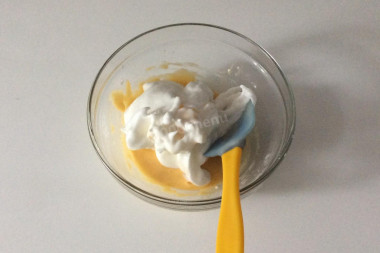
Add the whipped whites to the egg and flour mass. And mix very gently, preferably with a silicone spatula. It does not destroy the structure of whipped products. The movements should be fast and neat, from top to bottom.
Step 9:
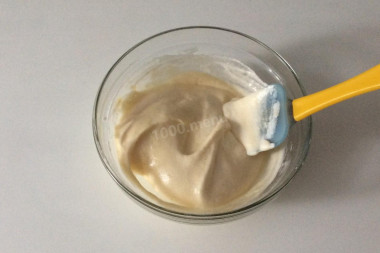
Stir until a uniform color, like this.
Step 10:
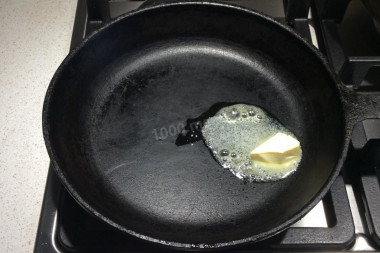
Put the frying pan on medium heat and heat it well. The oil put on it should bubble up, but not start burning. Adjust the fire.
Step 11:
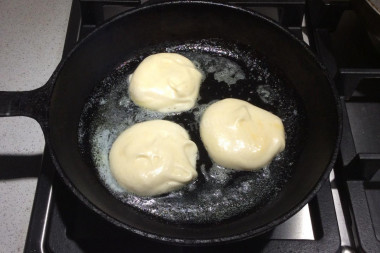
Spread the dough at the rate of two tablespoons per pancake in the pan. Pour two teaspoons of water and cover the pan with a lid.
Step 12:
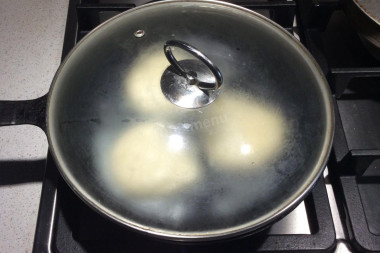
Fry the pancakes under the lid for a couple of minutes.
Step 13:
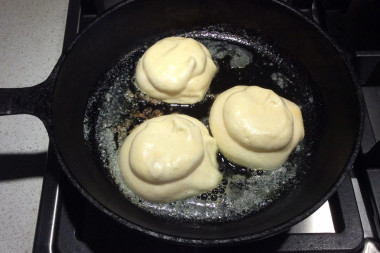
Add another tablespoon of dough to each pancake. Cover again and fry for another two minutes.
Step 14:
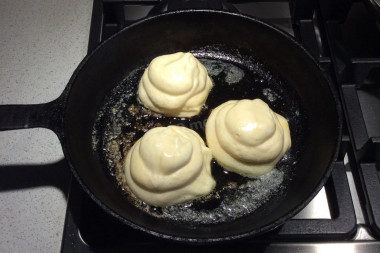
Open the lid again and add a spoonful of dough. Cover with a lid, fry further.
Step 15:
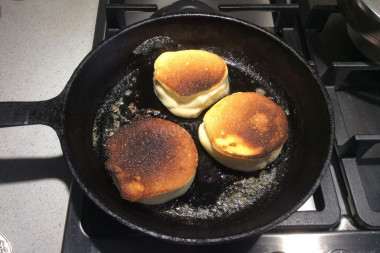
Next, gently flip the pancakes with two spatulas. The photo shows that I had too much fire under the pan, the pancakes were slightly tanned) Cover again and bring the pancakes to readiness. Ready-made pancakes are very tall, lush, but they fall off quickly, so they are served immediately after cooking.
I would advise frying pancakes on a mixture of vegetable and butter oils to prevent gorenje.
So that the pancakes do not spread over the pan, but are of the same even shape, you can try to cut ribbons about 3 cm wide from parchment or foil. Glue the edges with a drop of vegetable oil to make ring molds - so all the pancakes will be the same size. You can use a pastry ring of a suitable size.
Important! An incorrectly selected pan for frying pancakes can ruin even the best recipe. All the details on how to choose the perfect frying pan for different dishes read here .
Be prepared for the fact that flour may need more or less than indicated in the recipe. Focus not on the amount of flour, but on the desired consistency of the dough. To avoid mistakes, read about flour and its properties!
Any oils are useful only until a certain temperature is reached - the point of smoking, at which the oil begins to burn and toxic substances, including carcinogens, are formed in it. How to determine the roasting temperature and choose the best oil for frying, and which is better not to use at all, read here .
Caloric content of the products possible in the composition of the dish
- Whole cow's milk - 68 kcal/100g
- Milk 3.5% fat content - 64 kcal/100g
- Milk 3.2% fat content - 60 kcal/100g
- Milk 1.5% fat content - 47 kcal/100g
- Concentrated milk 7.5% fat content - 140 kcal/100g
- Milk 2.5% fat content - 54 kcal/100g
- Chicken egg - 157 kcal/100g
- Egg white - 45 kcal/100g
- Egg powder - 542 kcal/100g
- Egg yolk - 352 kcal/100g
- Ostrich egg - 118 kcal/100g
- Whole durum wheat flour fortified - 333 kcal/100g
- Whole durum wheat flour, universal - 364 kcal/100g
- Flour krupchatka - 348 kcal/100g
- Flour - 325 kcal/100g
- Granulated sugar - 398 kcal/100g
- Sugar - 398 kcal/100g
- Butter 82% - 734 kcal/100g
- Amateur unsalted butter - 709 kcal/100g
- Unsalted peasant butter - 661 kcal/100g
- Peasant salted butter - 652 kcal/100g
- Melted butter - 869 kcal/100g
- Salt - 0 kcal/100g
- Baking powder - 79 kcal/100g
- Vanilla sugar - 379 kcal/100g

